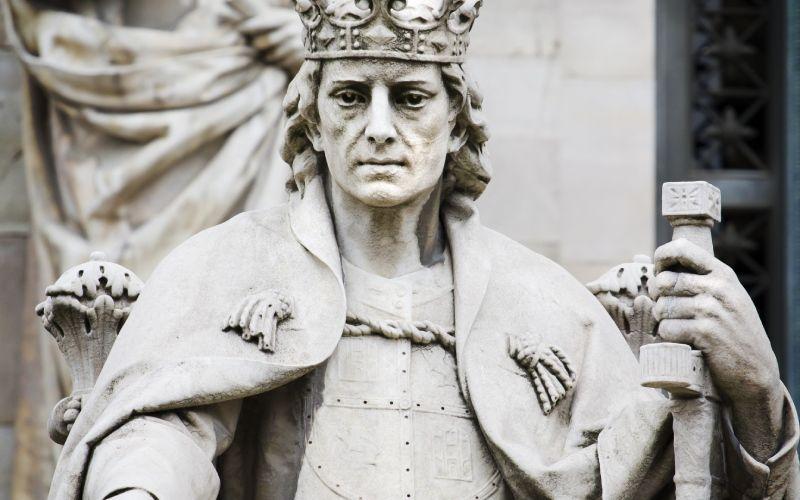Chess, a game of strategy and intellect, stands as one of the most ancient and popular board games in the world. Its enduring appeal lies not only in its intricate gameplay but also in its deep cultural significance across various societies. Chess has evolved remarkably from its early beginnings, influencing and being influenced by the cultures it touched. This blog delves into the rich history of chess, tracing its journey from ancient origins to the modern era, and highlighting key developments and legendary players along the way.
Ancient Origins, Chaturanga: The Birth of Chess

The earliest known form of chess is believed to have originated in India around the 6th century AD. This game, known as Chaturanga, was a four-player war game that reflected the Indian military strategy of the time. The name "Chaturanga" translates to "four divisions," referring to the infantry, cavalry, elephants, and chariots that made up the ancient Indian army. The game's board, an 8x8 grid, laid the foundation for the modern chessboard.
Rules and Gameplay

Chaturanga's gameplay was considerably different from modern chess. Each player controlled a quarter of the board, and the game involved dice, introducing an element of chance. The objective was to capture the opponent's king, similar to the checkmate concept in modern chess. The game pieces in Chaturanga included:
- King (Raja): The primary piece that needed to be protected.
- Minister (Mantri): The advisor to the king, weaker than the modern queen.
- Elephant (Gaja): Moved like the modern bishop but with limited range.
- Horse (Ashva): Similar to the knight in modern chess.
- Chariot (Ratha): Analogous to the modern rook.
- Foot Soldiers (Padati): Comparable to pawns in modern chess.
Shatranj: The Persian Influence

As Chaturanga spread to Persia, it evolved into Shatranj. This two-player version eliminated the element of chance, focusing purely on strategy. Shatranj featured pieces such as the Shah (king), Wazir (vizier, equivalent to the modern queen but much weaker), Rukh (chariot, now the rook), Fils (elephant, now the bishop), Asb (horse, now the knight), and Sarbaz (foot soldiers, now pawns). Shatranj was not just a game but also a respected intellectual pursuit in Persian society. Scholars and poets often referenced the game in their works, highlighting its cultural significance.
The Spread to the Islamic World and Europe
![47+] Chess Wallpapers Widescreen | WallpaperSafari](/_next/image?url=https%3A%2F%2Fstatic.platform.gamezop.com%2Fcms%2Fmedia%2F5a4e2925-2dee-499e-a34c-5b7a099934b9.jpeg&w=1080&q=75)
Shatranj spread to the Islamic world after the Arab conquest of Persia. The Islamic scholars and players made significant contributions to the game's strategy and literature. One of the earliest known chess manuals, "Kitab ash-Shatranj" by al-Adli, was written during this period, offering insights into the rules, strategies, and famous games of Shatranj.
By the 10th century, chess had reached Europe through the Moorish conquest of Spain and the Byzantine Empire. In Europe, chess underwent further modifications, leading to the game we recognise today. The introduction of chess to Europe marked the beginning of its integration into Western culture, where it would eventually flourish and evolve.
Medieval to Renaissance Period: Modifications and Standardisation

During the medieval period, chess rules began to standardise in Europe. One of the most notable changes was the introduction of the modern queen and bishop. These changes occurred around the 15th century, transforming the game into a faster and more dynamic contest. The queen, previously a relatively weak piece, gained the power to move any number of squares in any direction, becoming the most powerful piece on the board. The bishop's movement was also expanded to cover any number of squares diagonally.
Influence of Historical Figures

Chess gained popularity among the European nobility, with notable figures like King Alfonso X of Castile writing extensively about the game. The "Libro de los Juegos," commissioned by Alfonso X in 1283, is a significant historical document that includes detailed descriptions of chess and other games. This period also saw the rise of chess literature, with numerous manuscripts and books being written about the game, further standardising its rules and strategies.
Introduction of New Pieces
![200+] Chess Pictures | Wallpapers.com](/_next/image?url=https%3A%2F%2Fstatic.platform.gamezop.com%2Fcms%2Fmedia%2Fed3b4c1d-386d-4d2c-b6a3-31efa573341a.jpeg&w=1080&q=75)
The introduction of the queen and bishop greatly impacted the game. The queen became the most powerful piece, capable of moving any number of squares in any direction, reflecting the increased power of queens in European society. The bishop, representing the church, gained the ability to move diagonally across the board. These changes made the game more dynamic and strategic, setting the stage for the future evolution of chess.
The Age of Enlightenment and the Romantic Era: Intellectual Recognition

The Age of Enlightenment saw chess gain intellectual recognition as a game of skill and strategy. It became a subject of study among scholars and was played in coffeehouses across Europe, becoming a part of the social fabric. Chess was seen as a symbol of intellectual prowess, and its study was considered a noble pursuit.
The 19th century, known as the Romantic era of chess, was characterised by aggressive and tactical play. Players prioritised bold sacrifices and brilliant combinations over long-term strategic planning. This era was marked by a spirit of adventure and creativity, with players seeking to outwit their opponents through unexpected and daring moves.
Significant Players and Memorable Games
Players like Adolf Anderssen and Paul Morphy dominated this era. Anderssen, known for his imaginative and tactical play, became famous for his "Immortal Game" against Lionel Kieseritzky in 1851, a brilliant display of sacrifices and combinations. Paul Morphy, an American chess prodigy, was celebrated for his exceptional skill and tactical genius. His games, such as the "Opera Game" against Duke Karl of Brunswick and Count Isouard, remain classics and are studied by chess enthusiasts to this day.
The Modern Era: Formation of Chess Organisations

The modern era of chess began with the formation of official chess organisations. The Fédération Internationale des Échecs (FIDE) was founded in 1924, becoming the governing body for international chess competitions. FIDE established the rules and regulations for chess tournaments, ensuring consistency and fairness in competitive play. This period also saw the establishment of national chess federations, further promoting the game globally.
Contributions of Legendary Players

Legendary players such as Wilhelm Steinitz, Emanuel Lasker, and José Raúl Capablanca made significant contributions to the game. Steinitz, the first official World Chess Champion, laid the foundations for modern chess theory with his emphasis on positional play and strategic principles. Lasker, who held the championship for 27 years, was known for his psychological approach to the game, often outthinking his opponents. Capablanca, celebrated for his intuitive and positional style, was known for his ability to simplify complex positions and find the best moves effortlessly.
Evolution of Chess Strategies

The 20th century saw a profound evolution in chess strategies. The hypermodern movement, led by players like Aron Nimzowitsch and Richard Réti, challenged traditional principles by advocating for control of the centre with pieces rather than pawns. This approach introduced new strategic ideas and expanded the understanding of chess. The Soviet Union emerged as a dominant force in chess, producing numerous world champions, including Mikhail Botvinnik, Anatoly Karpov, and Garry Kasparov. Soviet chess schools emphasised rigorous training, deep analysis, and innovative opening preparation, contributing significantly to the advancement of chess theory and practice.
The Computer Age and Beyond: Impact of Computers and AI

The advent of computers revolutionised chess. Early chess engines like Deep Blue, which famously defeated Garry Kasparov in 1997, demonstrated the potential of artificial intelligence. Today, advanced AI like AlphaZero, developed by DeepMind, has taken chess to new heights by discovering novel strategies and approaches. AlphaZero, using deep learning and neural networks, taught itself to play chess at a superhuman level, challenging conventional wisdom and introducing innovative ideas.
Changes in Training and Gameplay

Technology has transformed chess training and preparation. Players now use powerful engines to analyse games, prepare openings, and study endgames. Online databases and resources have made chess knowledge more accessible than ever. The ability to analyse millions of positions in seconds has given players new insights and a deeper understanding of the game. Chess software and applications have also made it easier for players of all levels to improve their skills, offering personalised training programs and interactive lessons.
Online Chess Platforms

The rise of online chess platforms such as Chess.com and lichess.org has popularised the game globally. These platforms offer players of all levels the opportunity to play, learn, and compete from anywhere in the world, contributing to a vibrant and diverse chess community. Online tournaments and streaming platforms have brought chess to a wider audience, with events like the Magnus Carlsen Invitational and the PogChamps attracting millions of viewers. The accessibility of online chess has also fostered the growth of grassroots chess movements, encouraging more people to take up the game.
Conclusion
From its ancient origins in India to its current status as a global phenomenon, chess has undergone a remarkable evolution. Each era has contributed to the rich tapestry of the game's history, introducing new strategies, rules, and legends. As we look to the future, the potential for further developments in chess, driven by technology and global participation, seems boundless. Whether you are a seasoned player or a curious beginner, the world of chess offers endless opportunities for exploration and enjoyment. Embrace the challenge and dive into the fascinating world of chess today.
Test your General Knowledge! Visit:
https://www.quizzop.com/general-knowledge-quiz/category


